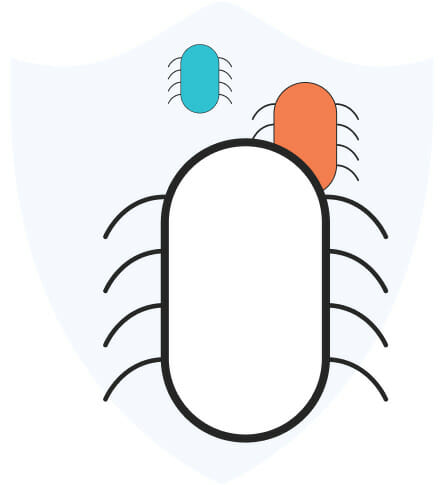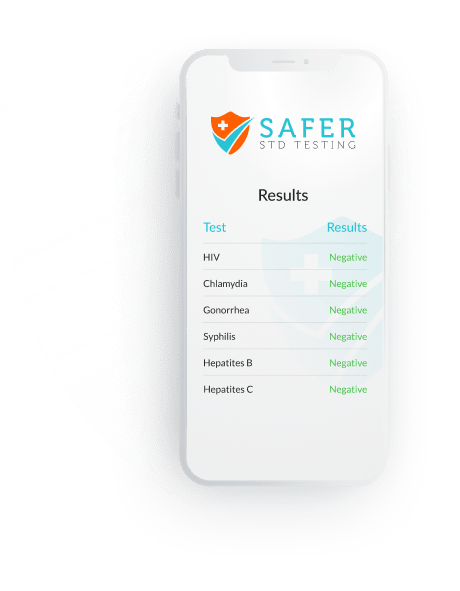


For medical emergency, dial 911 or call for emergency medical assistance. Read More


Chlamydia is spread by sexual contact with the vagina, penis, mouth of anus of somebody who is already infected. Anybody who is sexually active can get chlamydia.
Most cases of chlamydia occur in the 15-24 year age group (2). Men who have sex with men are also at higher than average risk to have chlamydia.
Risk factors for chlamydia include:
Chlamydia can also be spread during childbirth from mother to infant.
Anybody with symptoms of chlamydia (see below) should be tested. Anybody with a sex partner who has an STD should also be tested.
But chlamydia frequently causes no symptoms at all. At least 85% of women with chlamydia affecting the cervix have no symptoms (3). Screening for a disease means getting tested even if no symptoms are present, for the purpose of detecting and treating the disease in the early stages.
Screening for chlamydia is recommended for various groups below.
Screening in nonpregnant women:
Screening in pregnant women
Screening in men
Sexually active people with HIV
Most people with chlamydia have no symptoms but can still spread the infection to others through sex.
Symptoms in women include:
Symptoms in men include:
Symptoms that can occur in both men and women include:
Women at risk for chlamydia or who have been diagnosed with chlamydia should contact their health care provider immediately or go to the emergency room if they have any of these symptoms:
Men at risk for chlamydia or who have been diagnosed with chlamydia should contact their health care provider immediately or go to the emergency room if they have any of these symptoms:
If chlamydia is not treated, long term consequences for women include pelvic inflammatory disease and infertility. Pregnant women with chlamydia can also pass the infection on to the infant during childbirth.
Chlamydia can be diagnosed with a variety of tests. The urine test is the most convenient. The infection can also be detected with a vaginal swab, performed either by the woman herself or by the health care provider. Finally, swabs from the rectal or throat area can also be tested for chlamydia.
Before starting treatment for chlamydia, your health care provider may ask you about the following:
Most people with chlamydia have no symptoms but can still spread the infection to others through sex.
Antibiotic treatment of chlamydia is recommended for:
The purpose of treating is chlamydia is to:
Chlamydia is treated with antibiotics. The full prescribed course of antibiotics should be taken even if the symptoms improve after a few days. The antibiotic treatment, taken correctly, will cure chlamydia in the vast majority of cases. If antibiotics are not taken properly, the infection might not be eradicated.
For nonpregnant women with urethritis or cervicitis, and men with urethritis, the preferred treatment in most situations is a single 1,000 mg dose of azithromycin. This may require taking two 500 mg tablets. The advantage of this treatment is the convenience of a single dose. An alternative treatment is doxycycline 100 mg twice daily for seven days.
For pregnant women, the recommended treatment is a single 1,000 mg dose of azithromycin. Alternative treatments are amoxicillin or erythromycin for 7 to 14 days, depending on the dose. Doxycycline is not safe for treating chlamydia in pregnant women .
People with HIV can be treated for chlamydia with the same antibiotics that are used for people without HIV.
Treatment of chlamydial infections of the rectum, epididymis (a tube alongside the testicle), mouth/throat, as well as pelvic inflammatory disease, will depend on the extent and severity of the infection.
To prevent spreading chlamydia to others, it is important to avoid sexual activity for 7 days after single-dose antibiotic treatment (e.g. azithromycin) or until a 7-day course of antibiotics is completed (e.g. doxycycline)
Sex partners of someone with chlamydia should be treated for chlamydia. If the partner is not treated at the same time, reinfection can occur.
Retesting is recommended for all infected persons 3 months after treatment to check for reinfection with chlamydia. Additionally, pregnant women as well as people with persistent symptoms and those who were treated with amoxicillin or erythromycin should be tested again at least 3 weeks after treatment.
Some people who are infected with chlamydia also have a gonorrhea infection at the same time. In these cases, treatment includes antibiotics to cure both chlamydia and gonorrhea.
The only certain way to avoid getting chlamydia is to not have vaginal, oral, or anal sex.
To prevent chlamydia while you are sexually active, use a latex condom at all times and stay in a mutually monogamous relationship with a partner who does not have chlamydia or other STDs. Mutually monogamous means that you and your partner have sex only with each other and not with other people.
It’s unclear whether chlamydia infection in the mouth or throat can cause serious long term health problems.
Question: Why do I still have symptoms after finishing treatment for chlamydia?
Answer: If you had symptoms when you were diagnosed with chlamydia (not everybody has symptoms) and the symptoms remain or come back again after you’ve finished the antibiotics, there are a few possible explanations. First, you may have become reinfected with a new, separate chlamydia infection. Or you may have another STD, such as gonorrhea.




